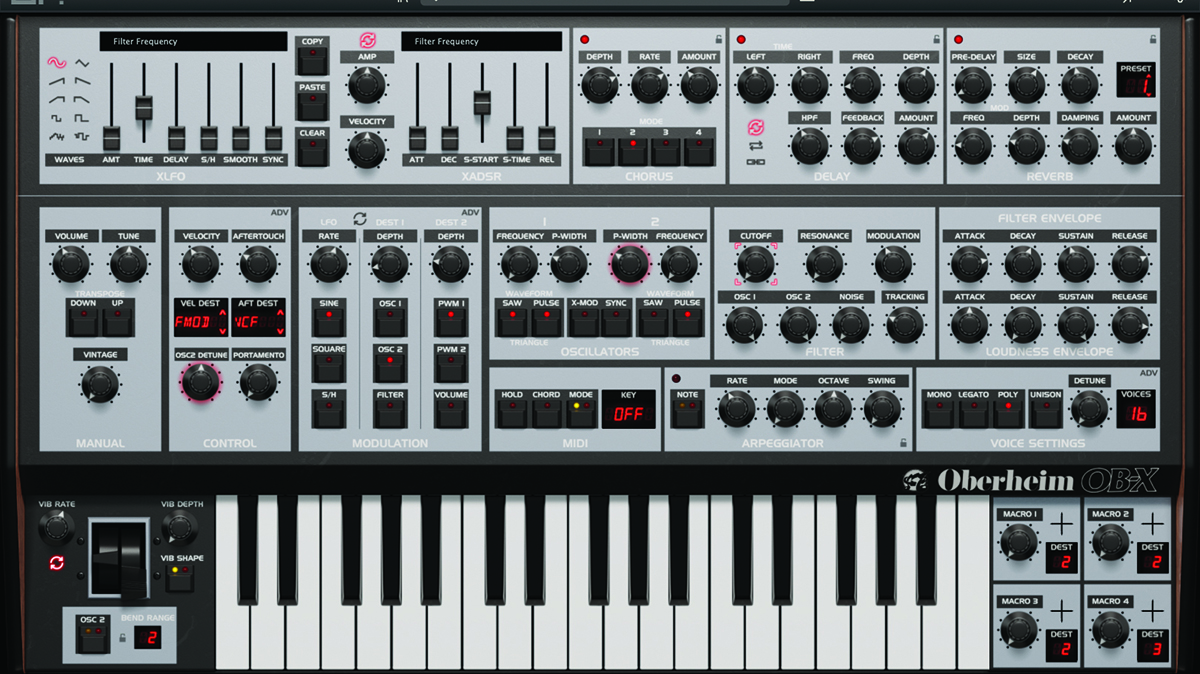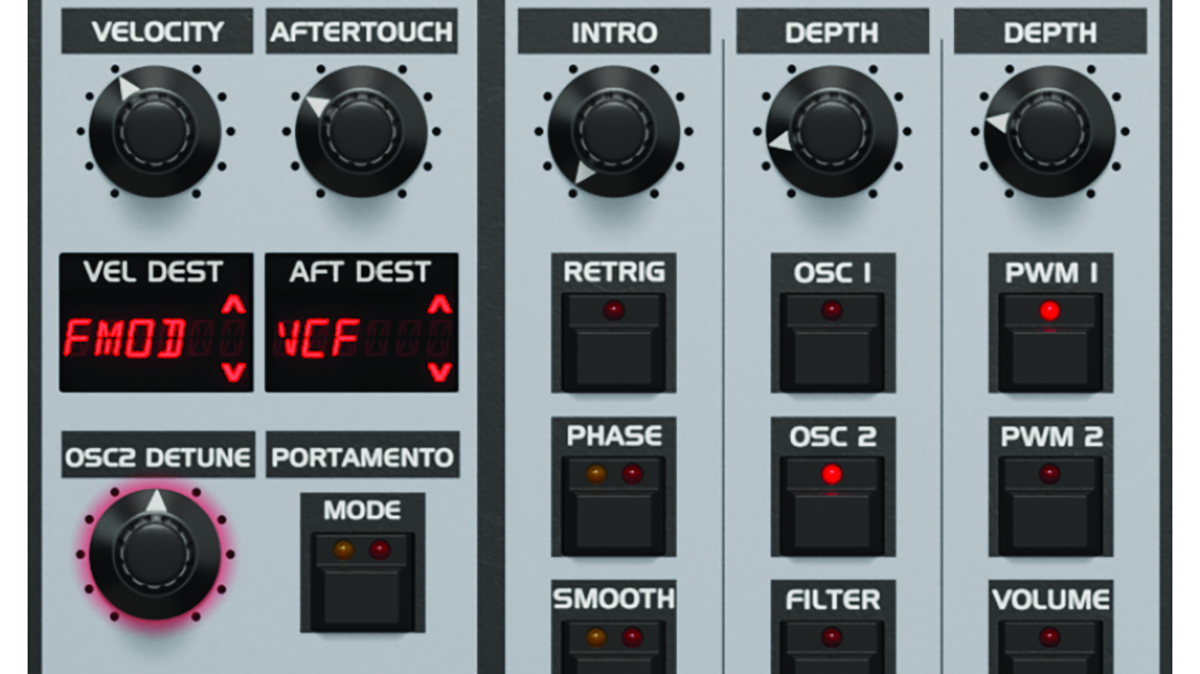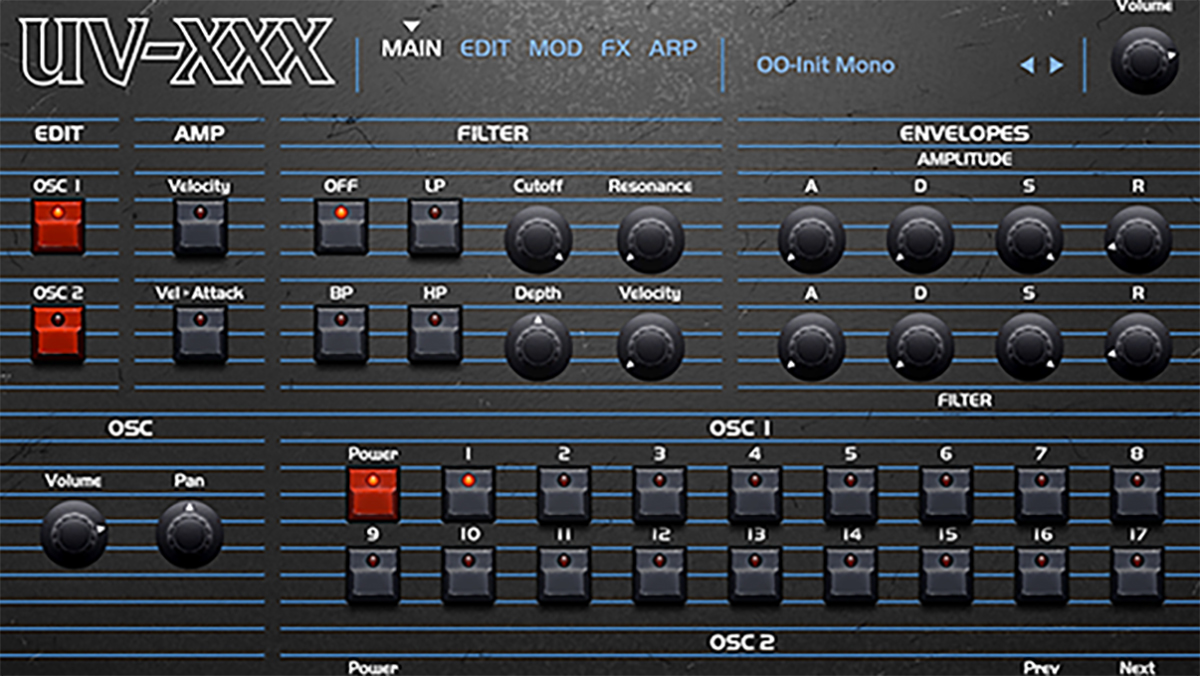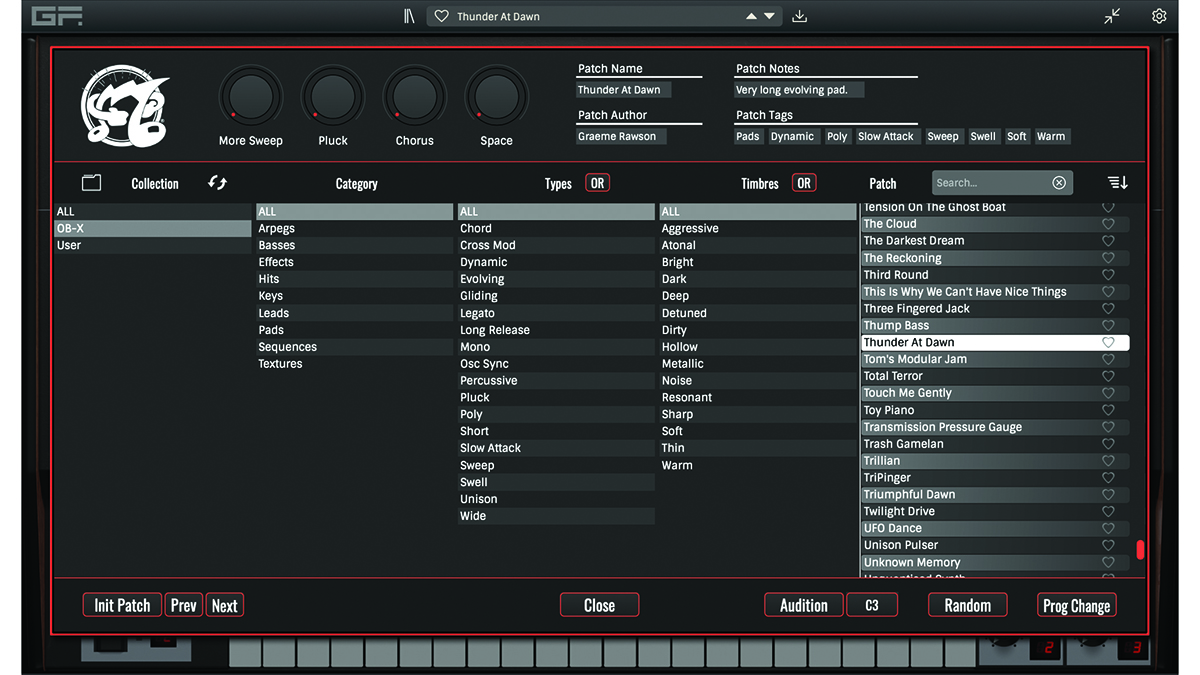
GForce Software OB-X: What is it?
Sometimes you just want a really huge-sounding synth, and they don’t come much bigger and phatter than an Oberheim Poly. However, the originals will likely require you to secure a second mortgage, should you want to go all-in on vintage, and that’s before you suffer from likely component failure. With these points ringing in our ears, any reincarnation in software is going to be worth a look, especially if it has an endorsement from Oberheim.
GForce Software has form in this field of recreation, with software versions of Mellotrons, Minimoogs, and now the OB-X, which joins the previously reviewed OB-E. While the OB-E was all about the SEM-based Oberheim 8-voice, this latest addition is far more centred around Poly convention.
OB-X aims to provide that huge Oberheim sound with a significant number of enhancements, beginning with a full 16-note voice limit; with two VCOs per voice, that’ll give you 32 oscillators. These can be employed in either poly, legato/mono or unison mode. Should you opt for the latter, those 32 VCOs can ring true or in a state of detuned frenzy, thanks to the accompanying detune pot. Adding further to the detuning milieu, the Vintage pot allows you to dial in how reliable you wish the tuning centre to be. It’s analogue, but in a form that you can dial back.

GForce Software OB-X: Performance and verdict
The layout of OB-X is very familiar; the two VCOs occupy the centre of the virtual panel, including saw, pulse and triangle waves, with pulse width control of the pulse and triangle waves.

• UVI OB Legacy
In a sampled homage to vintage Oberheims, UVI’s stylish collection packs a production-ready punch.
• Arturia OP-Xa V
This reimagining of the OB-Xa is not dissimilar to the OB-X, with weighty tones in an enticing package.
Cross modulation (X-Mod) and oscillator sync are also on-hand, making it easy to create those wonderful gnarly tones at source. This feeds the filter section which presents the 2-pole format, cited as the Oberheim trademark.
Speaking to OB purists, there is chatter about the exacting nature of the filter and whether or not it is as identical as it could be. GForce has made some sensible tweaks to the tracking and level controls, which are now controlled via a scalable pot, but you can visit the settings page and revert to switches, if preferred, although we’re not sure why you’d necessarily want to do this. It’s also fair to say that any comparison between a vintage machine, and an accurate plugin, is likely to highlight component degradation in the original, and for our money, the OB-X plugin has got that real sound and soul of an Oberheim.
GForce has included some other helpful features, especially in the area of modulation. Apart from the usual ADSR envelopes, fixed toward amplitude and filter, the XLFO and XADSR sections allow quick and easy routing, to multiple modulation destinations. Moreover, the procedure for application is beautifully guided; click a pot, and it immediately invites a modulation routing to that destination. Click another pot, to generate another batch of settings, and your previous settings will recall upon your return. Elegant and functionally sensible, and that’s an understatement!

Advanced control
You have to admire the way GForce has so beautifully reproduced the fascia of the original OB-X. The only problem is, DAWs occupy a space where we continually find ourselves wanting more, so with a sense of ingenuity, GForce has provided a couple of discrete ‘Advanced’ tabs, allowing access to more generous settings within the Control and Modulation sections. This means that you can now re-trigger the LFO multiple times and delay its modulation introduction, if desired. LFO-based cross rhythms await, with a number of non-original modulation paths available. Within the Control section, you can also generate step-wise portamento.
Add these advanced features to the existing elaborative content, provided by the XLFO and XADSR, and the OB concept goes considerably further than originally intended. To polish things off, there are three sets of dedicated effects, adding Chorus, Delay and Reverb to the source signal.
The OBligatory synth
It won’t come as a shock to any existing GForce devotees, that the OB-X is a wonderful-sounding thing! It can sound warm, harsh, gnarly, abrasive, sympathetic, and every shade in between. Moreover, thanks to the additional features, OB-X goes beyond its simplistic subtractive roots, which you’ll hear from the moment you begin to audition the onboard preset content, or engage by getting creative with your own patching. There’s versatility here, from a synth which rightly adopts a legendary status, and at an utter fraction of the price of an original classic.
MusicRadar verdict: The OB-X is the next best thing to a ‘real’ OB, with a GUI to match and a sound which is almighty, dominating and impressive.
GForce Software OB-X: Hands-on demos
GForce Software
sonicstate
SYNTH ANATOMY
Vulture Culture
GForce Software OB-X: Specifications
- Intel or Apple Silicon Mac. macOS 10.13 or above.
- Plugin formats: Intel & Apple Silicon Native, Standalone Application, AudioUnit, AAX, VST2, VST3.
- CONTACT: GForce Software



!["[T]he First and Fifth Amendments Require ICE to Provide Information About the Whereabouts of a Detained Person"](https://images.inkl.com/s3/publisher/cover/212/reason-cover.png?w=600)



